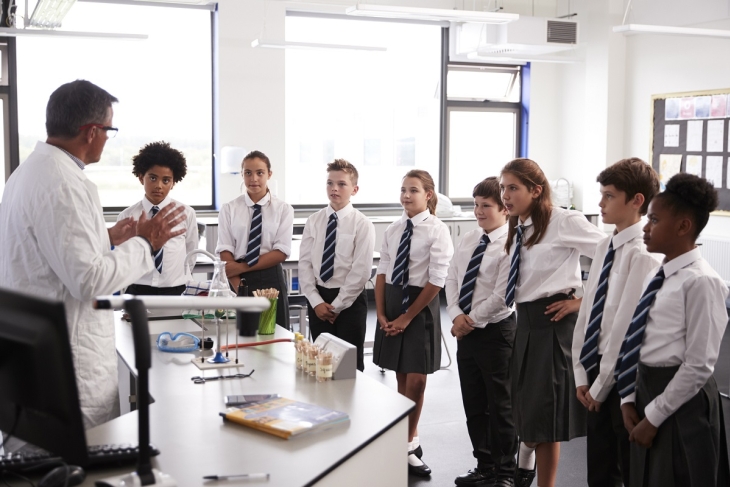As with most education issues, the research on private school choice is a mixed bag. Some studies indicate positive effects, while others suggest neutral or negative effects. What the vast majority of studies have in common is a focus on short-term outcomes—mostly student test scores. But the Urban Institute has published several reports over the last few years—three of which they recently updated—that examine longer-term outcomes, such as college enrollment and graduation. These studies are a critical addition to the canon of private school choice research, as people with stronger post-secondary attainment levels are likely to lead healthier lives, earn more income, and avoid the welfare and criminal justice systems.
One evaluation focused on the Florida Tax Credit Scholarship program (FTC), which began providing scholarships to low-income students during the 2002–03 school year. To study FTC’s impact on college enrollment and graduation, researchers used data from the Florida Department of Education that were linked to records from Step Up for Students, the nonprofit that administers FTC, and the National Student Clearinghouse, a nonprofit organization that collects data on post-secondary enrollments and outcomes. Analysts studied the outcomes of just over 16,000 FTC participants who took standardized reading and math tests in a Florida public school, then participated in FTC the following year. Each of these students was matched to five nonparticipating students enrolled in the same baseline school, grade, and year, and with similar characteristics such as test scores, race, and free lunch participation.
Results indicate that students participating in FTC during elementary and middle schools are 6 percentage points more likely to enroll full time in a two- or four-year college. Those who participated in FTC for the first time in high school were a whopping 10 percentage points more likely to enroll in college than their non-FTC peers. Results also found modest but positive estimated impacts on bachelor’s degree attainment: Students who entered FTC in elementary or middle school showed an increase in completion of 1 percentage point, while those entering in high school showed an increase of 2 percentage points. The estimated impact on enrollment and degree attainment tended to increase based on the number of years students participated in FTC.
Another evaluation looked at the Milwaukee Parental Choice program (MPCP), which was created in 1990 and has grown to serve nearly 29,000 students in 2018–19. For this report, the dataset included a sample of 1,926 MPCP students in grades three through eight, as well as 801 ninth graders, for a total of 2,727 students. Each MPCP student was matched to a similar student enrolled in Milwaukee Public Schools (MPS) in 2006 based on grade level, neighborhood, initial test scores, and demographic variables. Data on college enrollment and graduation came from the National Student Clearinghouse.
Findings indicate that ninth grade students enrolled in MPCP and MPS attended two-year colleges at nearly equal rates, but MPCP students were significantly likelier to enroll in a four-year university. Estimated graduation rates for two- and four-year institutions were about the same for both groups. Students enrolled in MPCP in 2006 in grades three through eight, meanwhile, were 5 percentage points more likely to enroll in any type of college by 2018. In terms of completion, only 3 percent of students from both MPCP and MPS graduated from a two-year college by 2018. At four-year colleges, however, MPCP students graduated at a rate 3 percentage points higher than their public school peers—a statistically significant difference.
The third evaluation looked at Washington, D.C.,’s Opportunity Scholarship Program (OSP)—the nation’s only federally funded voucher program. Available to D.C. residents who attend participating private schools, it has enrolled 1,000–2,000 students annually since its creation in 2004. Researchers used a different methodology than what was employed for the Florida and Milwaukee studies, and examined the college enrollment patterns of participants in OSP’s first two lotteries. They worked with OSP’s current administrator, Serving Our Children, to reconstruct baseline files from the original lottery applications of 1,776 students who applied for a scholarship in 2004 or 2005 and are now old enough to have enrolled in college. Their resulting estimates are referred to as “intent to treat,” since they measure the effect of being offered a scholarship.
The resulting estimates, none of which were “statistically distinguishable” from zero, show that students who were offered a scholarship were somewhat less likely to enroll in college within two years of expected graduation from high school. The pattern holds for two- and four-year colleges, and for four-year public and private colleges.
Overall, the findings are encouraging. Students who participated in private school choice programs in Florida and Milwaukee were more likely to enroll in and graduate from college than their public school peers. Results from Washington, D.C., however, show few differences in college enrollment between students who won and lost the voucher lottery, though the small sample sizes make the results less precise.
Still, two things should be kept in mind. First, even with the positive impact of private school choice, low-income students in the studied areas and nationally still have discouragingly low college-completion rates. Second, while studying long-term outcomes is valuable, the results are from students who participated in these programs many years ago—and all three of these programs have changed significantly since then. This makes it exceedingly difficult to draw conclusions about what is or isn’t currently working.
SOURCE: Matthew M. Chingos, Daniel Kuehn, Tomas Monarrez, Patrick J. Wolf, John F. Witte, Brian Kisida, “The Effects of Means-Tested Private School Choice Programs on College Enrollment and Graduation,” The Urban Institute (July 2019).


